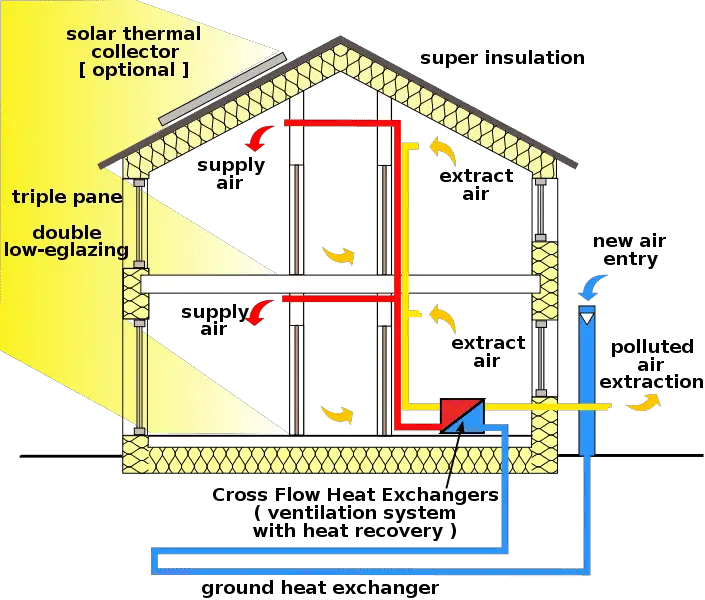5 Disadvantages of Rainwater Harvesting Explained
Disadvantages of rainwater harvesting are; instability of supply, size constraints, capital cost, technical/suitability challenges, and integration limitations.
This article discuses the disadvantages of rainwater harvesting, as follows;
1). Instability of Supply (as one of the Disadvantages of Rainfall Harvesting)
Short-term rainfall patterns are generally unpredictable and may vary significantly within a given area [1].
This is often a problem in rainfall harvesting, because it implies that reliable forecasting may not be possible, which could help in planning the structure, capacity, maintenance and operation of the rainwater harvesting (RWH) system.
Ironically, the unpredictability of rainfall is most severe in areas where rainwater harvesting is needed the most. This includes areas prone to drought, desertification, heat waves, and other environmental impacts of climate change.
Unpredictable rainfall implies that it is impossible to accurately design a rainwater harvesting system to serve efficiently in all future scenarios. As a result, continuous retrofitting and general adjustment may be performed, adding to the cost of running the system.
Also, the risk of environmental degradation may still be present, since rainfall may exceed the capacity of the storage reservoirs at any time, and may cause flooding, erosion, stormwater pollution and infrastructural damage, among others.
2). Size Constraints
Although the simplicity of RWH systems is one of the advantages of rainwater harvesting, the structure of these systems also presents challenges of scale.
Especially in residential settings, RWH system can occupy significant space that could be used for other important purposes. This is a problem, as in some cases or could imply economic losses and other unsustainable conditions.
Additionally, there are often significant decision challenges involved in selecting an optimum storage tank size for efficient rainwater storage [4].
Some studies suggest that the optimum storage capacity for rainwater collection tanks ranges from 1.2-2.6 m³ [2]. However, there are cases where this range is exceeded.
Size challenges are a deterrent to the adoption of rainwater harvesting practices in places where space is a scarce commodity. The issue could be partially addressed by installing some large components like storage tanks underground (or overhead), although this comes with its own constraints and difficulties.

3). Capital Cost (as one of the Disadvantages of Rainfall Harvesting)
The capital cost of rainwater harvesting systems, roofing adjustments, and other factors that must be met before rainwater harvesting can commence, is a problem for some potential users of the method.
It is important to note that the cost of setting-up a RWH system is not excessively high, especially when compared to other conservation systems. However, it could be significant, especially in cases that involve large volumes of rainwater.
Also, the need to use durable and high-quality materials contributes to the cost.
Often, these capital expenses are recovered severally, in water and energy savings during the lifetime of the RWH system.

4). Technical and Suitability Challenges
Rainwater harvesting, although relatively simple, is faced with some technical challenges.
The technical challenges facing rainwater harvesting involve overall design, size and configuration, and mode of installation of components.
Some technical knowledge about fluid dynamics is required to install and operate an effective RWH system.
Because the efficiency of the system also depends on its water sources, care must be taken to ensure that the geometry of roofs, pavements and other surfaces which capture and direct runoff into the RWH storage tank, is well suited for the role.
This is not always a very simple assessment, as it must take multiple factors into consideration, like the volume of rainfall to expect, the areal span of the capture surface, the direction of rainfall relative to the surface, and the inclination of all flow pathways that channel water into the system.
The need for suitability of all components involved can create challenges, especially at the stage of system-installation.
5). Integration Limitations (as one of the Disadvantages of Rainfall Harvesting)
Rainwater harvesting systems, due to their simplistic technical framework, are not always easy to integrate with buildings, or other water management tools and infrastructure.
This can be very limiting, as such integrations are often helpful to improve the resilience of the RWH system [3].
Components like sensors to control heat transfer in the system may also be difficult to use, alongside irrigation structures for sustainable agriculture.
Conclusion
The disadvantages of rainwater harvesting are;
1. Instability of Supply
2. Size Constraints
3. Capital Cost
4. Technical and Suitability Challenges
5. Integration Limitations
References
1). Lundqvist, J. (2009). “Unpredictable and significant variability of rainfall: Carryover stocks of water and food necessary.” Reviews in Environmental Science and Bio/Technology 8(3):219-223. Available at: https://doi.org/10.1007/s11157-009-9167-x. (Accessed 18 October 2022).
2). Nguyen, V. M.; Ichikawa, Y.; Ishidaira, H. (2018). “Exploring optimal tank size for rainwater harvesting systems in Asian tropical climates.” Hydrological Research Letters 12(1):1-6. Available at: https://doi.org/10.3178/hrl.12.1. (Accessed 18 October 2022).
3). Oberascher, M.; Dastgir, A.; Li, J.; Hesarkazzazi, S.; Hajibabaei, M.; Rauch, W.; Sitzenfrei, R. (2021). “Revealing the Challenges of Smart Rainwater Harvesting for Integrated and Digital Resilience of Urban Water Infrastructure.” Water 2021, 13(14), 1902. Available at: https://doi.org/10.3390/w13141902. (Addressed 15 October 2022).
4). Ruso, M.; Akintug, B.; Kentel, E. (2019). “Optimum tank size for a rainwater harvesting system: Case study for Northern Cyprus.” IOP Conference Series Earth and Environmental Science 297(1):012026. Available at: https://doi.org/10.1088/1755-1315/297/1/012026. (Accessed 18 October 2022).



